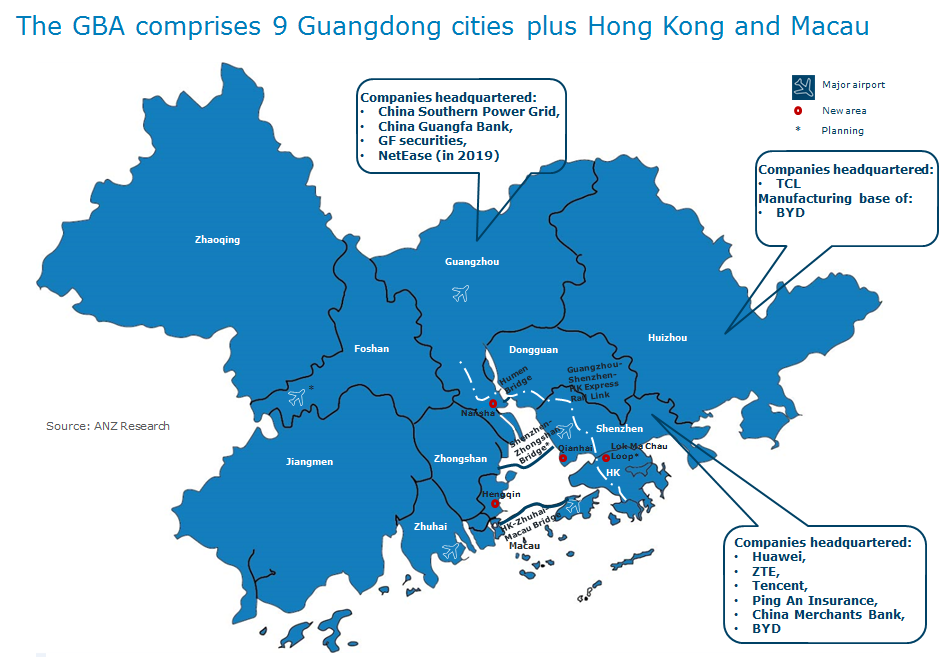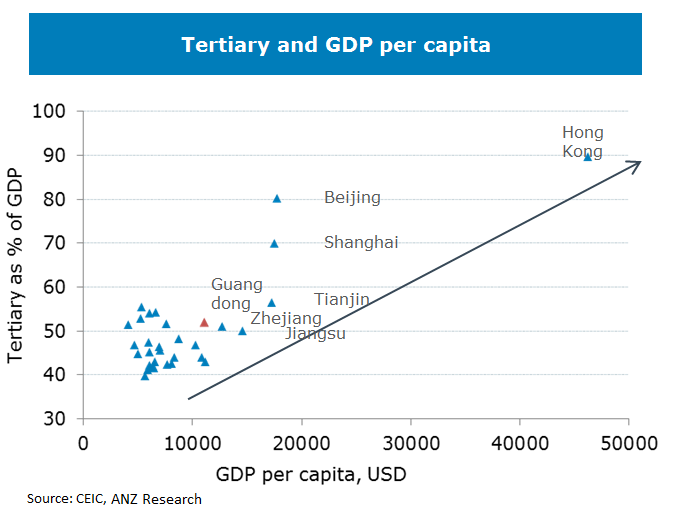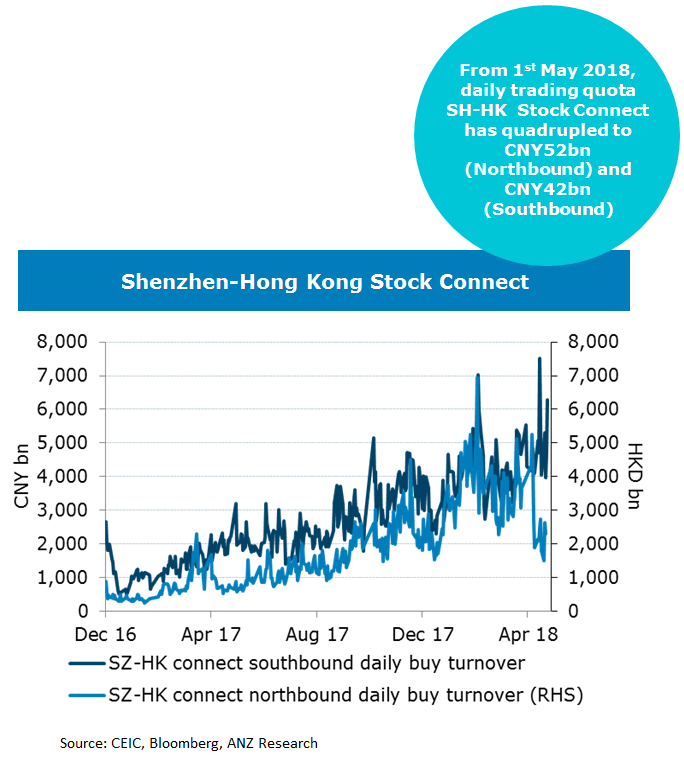-
Recent trade tensions between the United States and China prompted by trade restrictions from the US pose two key challenges to China's current development model.
The first is how China will address the West’s concerns about its market economy, state capitalism and intellectual property issues as it seeks to further integrate into the global economy.
"The GBA initiative aims to help the region regain its leading role and drive China’s manufacturing sector.”
The second is how China will upgrade its core competitiveness and move up the value chain to achieve sustainable growth in the face of global competition.
In ANZ Research’s view, the Guangdong-Hong Kong-Macao Greater Bay Area (GBA) initiative is a platform for China to address the above issues and pilot the country's economic transition and integration into the global economy.
Outstanding issues include whether the initiative will fuel income inequality in the region and how to integrate with Hong Kong smoothly.
{CF_IMAGE}
Initiative
The GBA covers the Pearl River Delta (PRD) region (nine cities) of Guangdong Province and Hong Kong and Macau. The former (or GBA 9) is the most liberalised region and the biggest beneficiary of China’s opening up since late 1970s.
{CF_IMAGE}
The GBA idea was first mentioned in 2015 when China publicised the Belt and Road initiative. In March 2017, Premier Li Keqiang highlighted the GBA in his Government Work Report, formally initiating the idea as a city cluster development plan.
In July 2017 the local governments of Guangdong province, Hong Kong, Macau and NDRC signed the official cooperation framework document of the GBA. The region’s detailed development outline is expected to be announced in the first half of 2018.
The GBA’s total gross domestic product is about the same as Australia and Canada. It has a larger population and land area when compared to other bay areas in the world. However, its growth scale and GDP per capita are still lacking, indicating room for catching up.
Past & future
The PRD region spearheaded China’s growth miracle with GDP per capita rising from $US2,825 in 2000 to $US20,616 in 2017, thanks to the rapid development of the local manufacturing sector which benefitted from the wave of investment from global names.
In addition to openness, the region also enjoys policy flexibility, helped it become one of the fastest-growing regions in the country.
However, the region’s growth momentum has softened during the last five years amid diminishing labour and cost advantages. GDP growth has fallen to 7 per cent to 8 per cent in recent years from double-digit growth prior to 2012.
{CF_IMAGE}
Industrial upgrades, technological innovation and development of modern services, advocated by the GBA initiative aim to help the region regain its leading role and drive China’s manufacturing sector from low to high value-added.
This will also help boost producer services and modern services in the region, as Guangdong holds the largest share of China’s tertiary sector.
{CF_IMAGE}
Integration with Hong Kong and Macau (which have inherited western economic and legal systems) is another core proposition and key differentiator of the GBA which if successful will offer experiences for China’s deeper global integration. The GBA could also be the pilot region for China’s capital account liberalisation and RMB internationalisation.
{CF_IMAGE}
The GBA initiative is meant to make more people affluent, but there is risk it may worsen income inequality. Elsewhere, the widening gap in working conditions and wage distribution between Los Angeles and the San Francisco Bay Area in the US is a good example of such a possibility.
The many differences between Hong Kong and China (including two legal systems, two customs, two currencies and monetary systems) could also pose big hurdles for the GBA initiative.
Betty Wang is a Senior China Economist & Raymond Yeung is Chief Economist Greater China at ANZ
The views and opinions expressed in this communication are those of the author and may not necessarily state or reflect those of ANZ.
-
-
-
-
-
anzcomau:Bluenotes/asia-pacific-region,anzcomau:Bluenotes/global-economy
China’s not-so-secret competitiveness weapon
2018-05-07
/content/dam/anzcomau/bluenotes/images/articles/2018/May/WangChinaBay_banner.jpg
EDITOR'S PICKS
-
George Yeo sits down with bluenotes to Chat about the geopolitical disruption of China.
25 April 2018 -
Technology is challenging the economic order far more than China ever did.
20 April 2018





